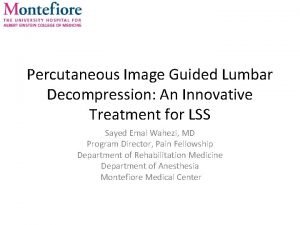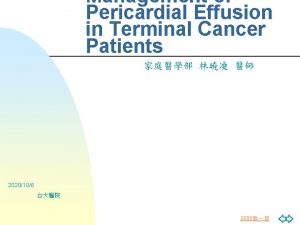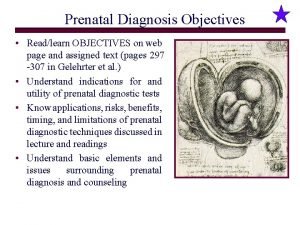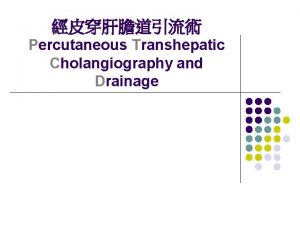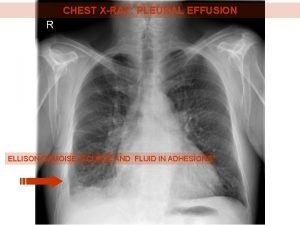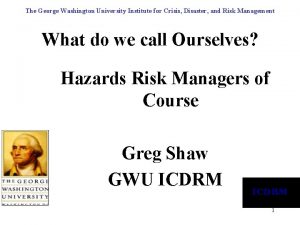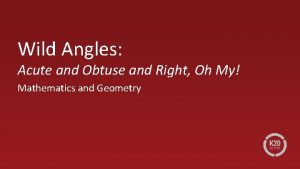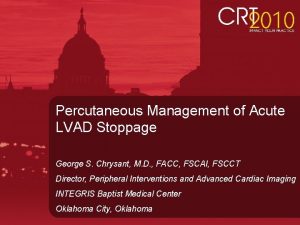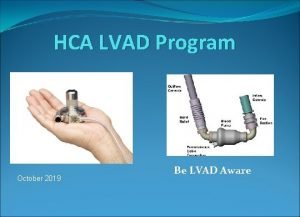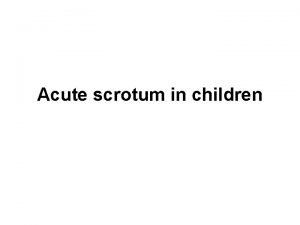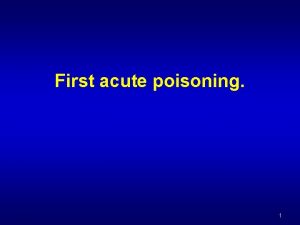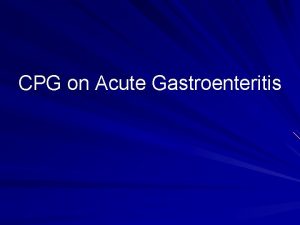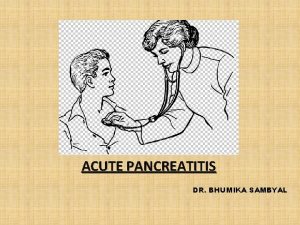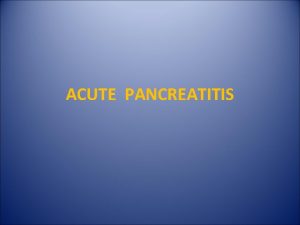Percutaneous Management of Acute LVAD Stoppage George S















- Slides: 15

Percutaneous Management of Acute LVAD Stoppage George S. Chrysant, M. D. , FACC, FSCAI, FSCCT Director, Peripheral Interventions and Advanced Cardiac Imaging INTEGRIS Baptist Medical Center Oklahoma City, Oklahoma

DISCLOSURES George S. Chrysant, MD Consulting Fees – Abbott Vascular, St. Jude Medical, Schering. Plough Corp. / Merck & Co. , Inc.

Background • Heart. Mate II is a next generation, continuously flowing LVAD (valveless) – Used as bridge to transplant and as permanent ‘destination therapy’ – Over 3000 pts have been implanted; experience is growing • Pump stoppage is a potentially lethal complication, which requires immediate attention • Surgical intervention may not be immediately possible or available

Heart. Mate II LVAD VALVES Heart. Mate II Open Conduits (NO VALVES) Heart. Mate XVE Courtesy of Thoratec Corporation

Heart. Mate II Courtesy of Thoratec Corporation

Patient Presentation • 44 year old ischemic cardiomyopathy • Underwent Heart. Mate II implantation for end-stage cardiomyopathy • At 6 mos, Red heart alarms, associated with pump stoppage • Transferred to implant center with progressive hypotension & dyspnea

Cine showing drive line fracture of Heart. Mate II G. S. Chrysant, M. D.

HMII LVAD - Acute Stoppage • Pump failure due to internal Driveline fracture – associated with movement and strain due to weight gain • Backflow through the (valveless) LVAD ensues – From the Aorta through the LVAD into the LV – Analogous to acute, severe AI (estd. 1 -1. 5 L/min) • LV volume overload + Underlying cardiomyopathy leads to progressive LV failure • Need to emergently stabilize patient and interrupt Backflow through the LVAD

Heart. Mate II Graft to As. Ao Batteries Perc Lead Controller LV Uptake Pump Courtesy of Thoratec Corporation

Heart. Mate II Implantable Pump Batteries Percutaneous Lead Controller Courtesy of Thoratec Corporation

Balloon Occlusion of Heart. Mate II Outflow Graft 16 X 40 mm Maxi LD G. S. Chrysant, M. D.

Balloon Occlusion • Obstruction of the outflow graft (15 mm dacron w/ end to side anastamosis) allows improvement in Backflow • Next step was temporary, circulatory support with percutaneous femoral-femoral bypass (ECMO) • Replace LVAD

Management • Surgical intervention may not be immediately possible or available • Percutaneous stabilization, interrupting acute LVAD Backflow necessary for survival • Allow time for transfer to implanting center for definitive replacement therapy

Important Points • Growing population of LVAD patients • In Oklahoma, many live in rural sites • Stabilization by interrupting acute backflow can occur in the catheterization laboratory prior to transfer to implant center • In our case, patient was stabilized for 4 days until Heartmate II was replaced

Acknowledgement • Douglas A. Horstmanshof, M. D. • James W. Long M. D. , Ph. D
 Percutaneous image-guided lumbar decompression (pild)
Percutaneous image-guided lumbar decompression (pild) Intrapericardial colon
Intrapericardial colon Intraoperative cholangiogram
Intraoperative cholangiogram Amnio vs cvs
Amnio vs cvs Percutaneous transhepatic cholangiography and drainage
Percutaneous transhepatic cholangiography and drainage Ellis curve on chest x ray
Ellis curve on chest x ray Melena is a temporary stoppage of intestinal peristalsis.
Melena is a temporary stoppage of intestinal peristalsis. Royalty account is a account
Royalty account is a account George washington vs king george iii
George washington vs king george iii George washington and thomas jefferson venn diagram
George washington and thomas jefferson venn diagram Pancreatitis nursing diagnosis
Pancreatitis nursing diagnosis Institute for crisis disaster and risk management
Institute for crisis disaster and risk management Top management and middle management
Top management and middle management Top management middle management first line management
Top management middle management first line management Middle level management
Middle level management Name 2 objects with acute angles
Name 2 objects with acute angles
